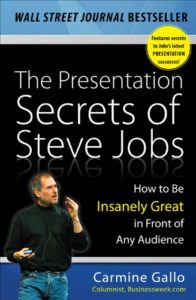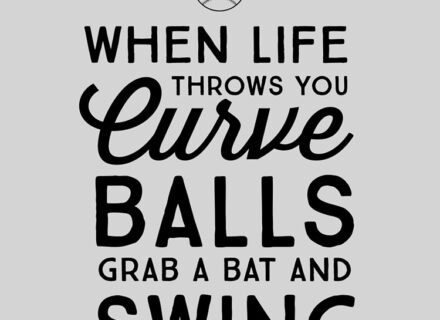“A fear of public speaking was found to be a more pressing concern than death, according to a ranking of society’s most pervasive fears. Only the loss of a family member was deemed a more terrifying thought.”
So, yeah…. Public speaking is scary AF for the vast majority of the population. I can personally attest to this from my early experiences with speaking in front of groups of people. It didn’t really matter the size of the group- Sometimes it was 10 people, at other times it was 50 or more. Loss of breath, disorientation, and a general sense of ‘get me the f#ck out of here’.
Luckily, I’ve [mostly] practiced my way past the fear of public speaking, but I have a deep sense of empathy for those who’ve not yet made it there.
I’ve had the privilege to speak in front of thousands of people across many stages over the last several years, and I’ve grown to be more comfortable than ever. In fact, I have fun and enjoy it now. None of this is to say I don’t still get nervous, because I do. But, I’ve learned to channel the nerves differently. In part, that’s what this post is about. I’m sharing some tips that have helped me become a better, less terrified, more confident public speaker.
These are not in any particular order, although my subconscious may have done some prioritization.
Here we go.
Know your content cold.
For me, this is probably the most important thing to feeling more confident when delivering a talk. It’s not only knowing the content like the back of your hand, but knowing its purpose for the audience. In other words, what do you want them to feel, think, and do during and after your talk? The more intimate you are with the content, the greater your ability to deliver it. Sounds obvious, but it’s importance is often under-estimated. Just ‘winging it’ is not a great strategy for most of us.
It’s about them, not you.
FOPO is an acronym that’s circulating recently and it means ‘Fear of Other People’s Opinions’. This is the root of why people fear public speaking as much, or more than death. Seems ridiculous, but it’s very real. The reality is, the people in the audience are thinking much more about themselves than they are about you. They are a part of the audience for their purposes, not yours. So while we selfish humans like to think it’s all about us, in this instance it’s not. Instead of worrying about being judged, worry about sharing great information and teaching something useful.
Rehearse, Rehearse, and Rehearse again.
Ever see someone give, what seems to be, an effortless or flawless speech/ presentation? Maybe Steve Jobs or someone else you admire? Well, here’s the not so secret, secret…. They rehearse over and over again until they have it down cold. I’m not convinced there’s a perfect formula for rehearsal time relative to how long your presentation is, so I just practice until I feel good about it.
One of my favorite books on developing and delivering great presentations is about the master… Steve Jobs.
Treat it like a conversation, not a presentation.
One of my favorite points of reference for public speaking is Matt Abrahams video titled ‘Think Fast, Talk Smart: Communication Techniques’. In this video there’s a very helpful point he makes. That is, to treat the presentation like a conversation. Don’t talk at the audience. Talk to them and involve them. This singular point was somewhat of a Eureka moment for me, personally. It makes public speaking a whole lot less stressful. Not only for you, as the presenter, but for the audience, too. There’s a weird dynamic that occurs when a speaker is nervous. It actually makes the audience nervous and uneasy.
Tame your mind and your inner dialogue.
I practice mindfulness through meditation as often as possible and I truly believe in the benefits. However, even if you do not meditate regularly, or at all, there are still ways to use mindfulness techniques to tame the inner dialogue before going on stage or simply presenting to any audience. Controlling your breathing, grounding yourself in reality, forgetting about FOPO, and just simply being in the moment. I’m not going to dive deep into each of these, but I encourage you to read more about them. It’s helped me significantly.
My inner dialogue shifted from ‘I have to be on stage in front of a bunch of people‘ to ‘I’m lucky to have the opportunity to be on stage and share this with these people.’ If you change your view of the situation, it helps.
Don’t try to memorize word for word.
An early mistake I made more than once was to try and script an entire presentation word for word and memorize it… word for word. For me, and I think others, this is a terrible idea. You get over-focused on remembering what to say next and completely forget about the bigger picture message. Why am I here? What am I trying to convey? Memorizing a script also constrains your ability to adapt to the audience.
Now, I’m going to confuse this point a little….. When I prepare for a presentation I will write out full sentences of what I want to say. I don’t do this to remember each word, but instead to create clarity on the message. Once the message is clear, I will boil the longer form message down to a few key points that will end up on note cards. I’ll use the short form note cards to do the bulk of my rehearsal. Eventually, I lose the note cards once I feel like I have the content down cold (refer to the first point I made in this post).
Just Do It.
In the words of Nike…. Just Do It. Find opportunities to get in front of people. Ask to present at your company. Hold meetings with your teams. All of these are opportunities to practice the art of public speaking.
Have fun!




